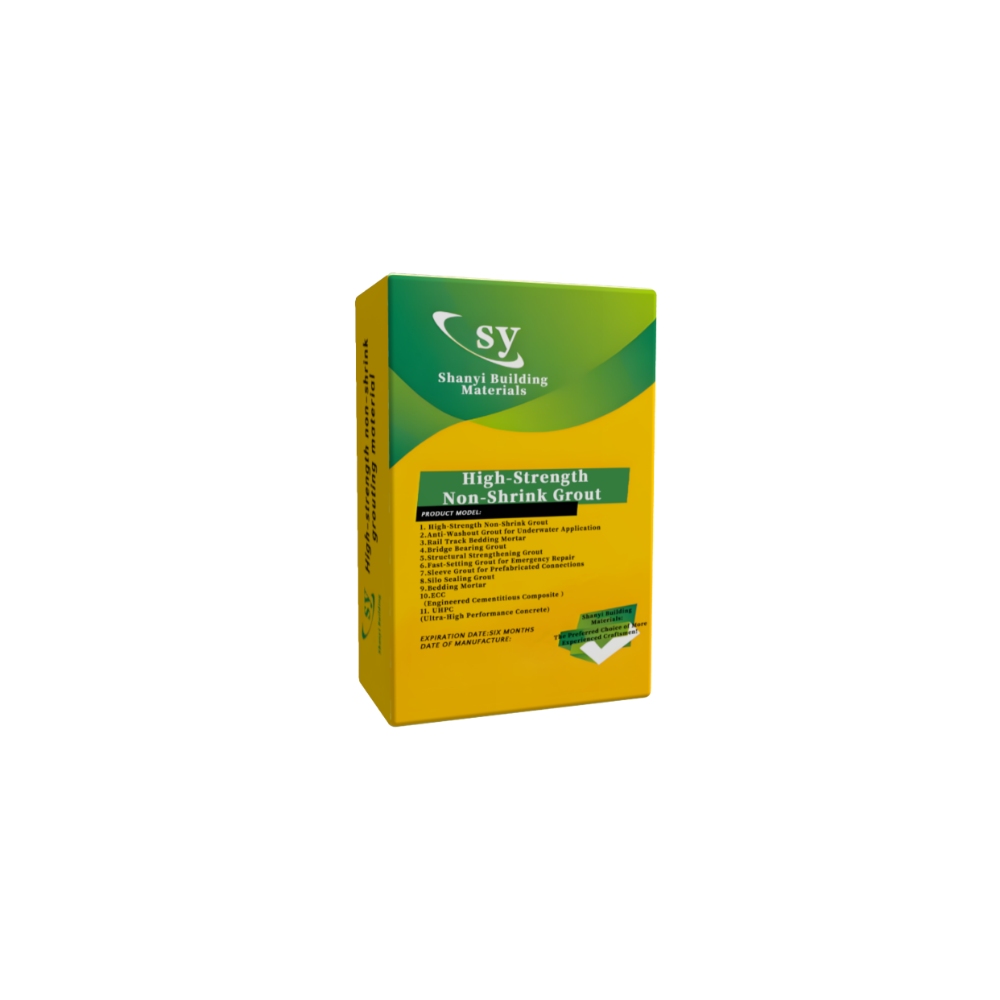https://www.shanyijc.com/non-dispersive-underwater-grout-construction-methods-and-techniques.html
In the challenging domain of underwater construction and repair, the integrity and durability of structures are paramount. Wuxi Shanyi New Building Materials Co., Ltd., a renowned manufacturer of high-quality construction materials, has introduced a groundbreaking product: non-dispersive underwater grout. This innovative material is specifically designed to maintain its structural integrity and performance in underwater environments, making it an essential tool for a variety of underwater construction and repair projects.

Non-Dispersive Underwater Grout
Wuxi Shanyi’s non-dispersive underwater grout stands out for its exceptional properties, engineered to resist washout and maintain cohesion even in challenging submerged conditions. Its key features include:
-
High Cohesion: The grout maintains its shape without dispersing in water, ensuring precise placement.
-
Strong Adhesion: It adheres firmly to different substrates, providing a durable and watertight seal.
-
Versatility: Suitable for diverse underwater structures, including dams, bridges, and marine platforms.
This combination of properties makes it a reliable choice for both routine maintenance and critical repairs in underwater construction.
Construction Methods and Techniques
To maximize the effectiveness of non-dispersive underwater grout, several application techniques are commonly used:
-
Direct Pouring Method:
The grout is poured directly into the repair area. This straightforward method works best for small cracks and flat surfaces, providing quick and efficient repairs. -
Formwork Method:
Templates or formwork are used to confine the grout within a defined area before pouring. This technique is ideal for larger cracks or complex-shaped structures, ensuring uniform distribution and controlled curing. -
Pressure Grouting Method:
Specialized pressure equipment injects grout into deep cracks or hidden voids. This approach is particularly suitable for deep-seated or hard-to-reach damages, delivering thorough filling and long-lasting structural integrity.
By selecting the appropriate technique based on crack size, depth, and structure complexity, engineers can achieve optimal results with Wuxi Shanyi’s non-dispersive underwater grout.
Applications and Advantages
Non-dispersive underwater grout is widely used in repairing and strengthening underwater structures, including:
-
Dams and spillways
-
Bridges and piers
-
Marine platforms and coastal structures
Its ability to resist washout, adhere strongly to surfaces, and maintain cohesion under water ensures long-lasting repairs, improved structural safety, and reduced maintenance costs.
Wuxi Shanyi New Building Materials Co., Ltd. continues to provide innovative solutions for underwater construction and repair. By combining high-performance non-dispersive underwater grout with proper construction techniques, engineers can ensure durable, reliable, and watertight repairs in even the most challenging underwater environments.
https://www.shanyijc.com/non-dispersive-underwater-grout-construction-methods-and-techniques.html
Wuxi Shanyi New Building Materials Co., Ltd.
